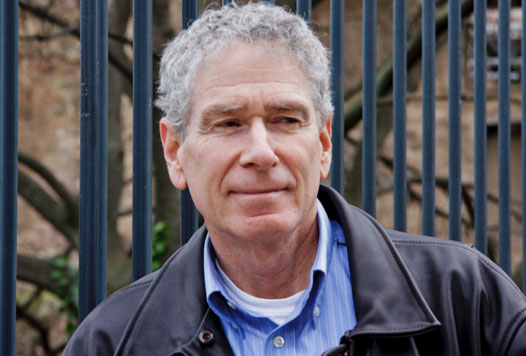archive
Dr. Elliott Gorn New Book and Interview

The Department congratulates Dr. Elliott J. Gorn for the publication of his new book, Let the People See: The Story of Emmett Till. The book was released on November 1, 2018 by Oxford University Press. The work has been receiving great reviews from multiple sources including NPR’s Fresh Air and Publishers Weekly. Dr. Gorn has also recently had an essay regarding Emmett Till published on Time Magazine’s website.
Elliott Gorn (Ph.D. Yale University, 1983, A.B. University of California, Berkeley, 1973) is the Joseph Gagliano Professor of American Urban History and has a distinguished record of scholarship, publication and excellence in teaching and student mentorship. This coming spring semester he will be teaching “American Icons: Heroes, Images, Ideas.”
Dr. Gorn took some time out of his busy schedule to answer a few questions about the book with Public Media Assistant, Alicia Zeimet.
Your book aims to showcase the lasting legacy of the Emmett Till murder, which is underscored by the Department of Justice’s reopening of the case this year. Why does the case hold such sway in the United States?
The Emmett Till case wasn't always so well-known.
It was enormous headline news in 1955, not just in the U.S. but overseas. The story became part of a Cold War narrative, the United States Information Agency claiming that such violence was an aberration and that Americans were horrified, others in Communist states and the de-colonizing world arguing that the Till case proved that people of color were treated with violence and contempt by the U.S.
And among Americans, the Till case divided the country deeply, white-supremacists and those who would enforce the old Jim Crow order of rigid segregation (the Till murder occurred just a year after Brown v. Education) versus those who sought a more moderate course in race relations.
Of course African Americans were horrified by the murder and especially by the acquittal of Till's killers. The story became an important focus for organizing against racial discrimination and hatred. Black activists took Till's memory into the Civil Rights Movement, and often referred to themselves as the Emmett Till generation.
It is wrong, however, to assume that there was a long memory of the Till murder and its aftermath among white Americans. Till was largely forgotten for over thirty years. The Public Television series, Eyes on the Prize, made the story its opening, and for the first time, white people saw the photos of Till's brutalized face in his coffin. Slowly the story gained traction as a key event of the long Civil Rights Movement for whites--blacks always remembered Till. Today, the Till story has become a shorthand for the brutality of the Jim Crow South and especially for the horrors of the criminal justice system.
What challenges arise when researching and writing about an event so widely explored throughout the past sixty-plus years?
Actually, when I started this project, around 2010, Till was reemerging in popular culture--there were a few new good documentaries by African American filmmakers, but few academics had taken on the subject. In the last two years, four new books have emerged. Apparently all of us at once decided that this story had been slighted.
Who do you hope reads Let the People See? How did this affect the tone and narrative structure of your writing?
I always write for a general audience. I can't do it any other way. I might or might not get many readers, but I always act as if any reader interested in the subject will find the book welcoming. I don't always succeed, but I hope with this book that general readers who want to know something about not just Till but American history in the mid-twentieth century will get something out of it.
Congratulations, Dr. Gorn!
